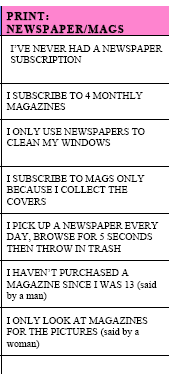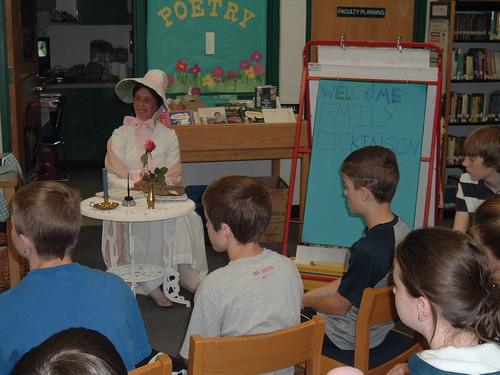I realized that I needed to wait until the kind folks at Storybird moderated my picture book story until I could get the embed code for it. This is part of the Picture Book Challenge.
This book is called MoonSong.
Peace (in the song),
Kevin

Not another challenge. Yes, another challenge. This one is National Picture Book Writing Week, in which blogger Paula Yoo is challenging folks to create seven picture books in seven days. That seems like a lot, and if I were to draw, it would be impossible. But I am a writer and I do love a challenge, so I am going to use Storybird to see how many books I can create this week.
Here is Day One. The book is called MoonSong, and I was thinking of how to weave music into a picture book story. I wondered: what if the moon were inspiration but didn’t know it. (I am having trouble finding the embed code, so here is the link to the book at the Storybird site).
Peace (in the books),
Kevin
I recently picked up Building Literacy Connections with Graphic Novels: Page by Page, Panel by Panel, mostly because it is edited by James Bucky Carter, whose writing and links and insights around comics and graphic novels I enjoy reading about. (Check out his blog: EN/SANE World). In this collection of essays from various educators, Carter weaves together ways in which teachers can bring graphic novels and comics into the curriculum.
Carter’s introduction gives some nice background knowledge around the connections between art and writing, and the form of graphic novels. In the book, Carter makes the case for these forms to be considered real and authentic forms of literacy, and not just something to be laughed off or put out for the down-times of the classroom.
“There is a graphic novel for every learner in your English language arts classroom,” is how Carter begins, and he ends his introduction — first, by acknowledging that more inquiry research in the classroom needs to be done and shared — by declaring, “Bit by bit, we can expand the Golden Age of the graphic novel in the domain of education.”
Not every chapter had me engaged, but the one I really liked was by Don Leibold, whose Abandon Every Fear, Ye That Enter: The X-Men Journey through Dante’s Inferno, about the connections between an X-Men story arc and Dante’s work, and how a teacher might use on to supplement the other. I vaguely seem to remember the comic that Liebold refers to, and it is fascinating to think of the two stories, side by side.
Most of the chapters deal with reading comics and graphic novels, and I have to say that the chapter that seemed to suggest the use of technology (Using Graphic Novels, Anime and the Internet in an Urban Setting by Nancy Frey and Douglas Fisher) didn’t really do much for me in terms of technology and comics. I was hoping and wishing for more, particularly given the influx of digital comics and the ability to create them easier than ever before.
Luckily, Carter ends the anthology with a sharp chapter on bringing young writers along with comics as a source of mentor text and inspiration with a Comic Book Show ‘N Tell Project in which students work on storyboarding, editing and writing with a voice for an audience.
If you are a teacher considering the merits of graphic novels, then Carter’s anthology collection is a good read and a good starting point for those folks trying to make a case for comics. And as Carter points out himself, I hope books like this one continue the push of graphic literacy in the classroom for all students.
Peace (on the page),
Kevin
PS — Today is Free Comic Book Day, so get yourself down to the nearest comic book shop and grab some comics for the classroom. The free stuff is not really the best stuff — mostly samples and anthologies — but still, they can make a good supplementary classroom resource.
This is an intriguing study of 200 college students at the University of Maryland who spent a media/technology-free 24 Hours and then took part in a study of their reactions and impressions of the experiment.
Among the findings (which are expanded at the website):
Among the conclusions of the report:
The major conclusion of this study is that the portability of all that media stuff has changed students’ relationship not just to news and information, but to family and friends — it has, in other words, caused them to make different and distinctive social, and arguably moral, decisions.
The absence of information – the feeling of not being connected to the world – was among the things that caused the most anxiety in students as they sought to learn about the role of media in their lives – ironically by completing an assignment that asked them to spend a day without using media.
Check out this grid of notes from their class discussions about how they use different technology and media. The column around print, while a small response, is indicative of the slow demise of newspapers and magazines in the world.

Peace (in the world),
Kevin

Yesterday, thanks to the work of our school librarian, we had a special poetic visitor arriving from the Great Beyond. An actress who performs as Emily Dickinson (who lived in nearby Amherst) spent time with my students yesterday morning, talking and acting as if she were Emily Dickinson. She talked of her life and of her writing, and while it is hard to keep sixth graders in Spring in their chairs for (for them) an obscure poet, they were mostly attentive.
My student teacher is doing her unit around poetry (ack, I really miss teaching poetry this year), so the timing was right. As the librarian and I agreed, our kids need a variety of styles of performances (we had Mordicai Gerstein not too long ago and he was drawing, and laughing, and energetic with them).
And plus, who better to bring back from the dead than Emily Dickinson?
I’ve always like this poem of hers:
AFTER a hundred years Nobody knows the place,— Agony, that enacted there, Motionless as peace. Weeds triumphant ranged, 5 Strangers strolled and spelled At the lone orthography Of the elder dead. Winds of summer fields Recollect the way,— 10 Instinct picking up the key Dropped by memory.
Peace (in the poems),
Kevin

Today is Poem in Your Pocket Day, when you are invited to print out or write out a favorite poem and keep it close to you throughout the day. I chose a poem called, eh, “Pockets” by Howard Nemerov.

It’s a new poem to me, but I like the use of pockets as a metaphor here, seen as lonely collectors of stuff — but sort of a “theives’ kitchen” of things that bounce around all day — and which ends with the cool line of, “What is a pocket but a hole?”
What poem will you carry around with you today?
Peace (in the poems),
Kevin
A few months ago, we held a benefit concert at our school called Concert for Change, in which we collected money donations for the Pennies for Peace organization and collected books for New Orleans schools still struggling to rebound from Hurricane Katrina. One of my students spearheaded the book effort, and I assumed we would ship the dozen or so boxes of books, but he and his mom surprised me by saying they intended to deliver the books personally.
Last week, during our vacation, they did that, driving from Massachusetts to New Orleans to bring the books to a school that they had identified through their church organization. What a great learning experience for him. He brought back some pictures, and I made him this Animoto video as a gift of thanks. He also brought his Flip, so I am looking forward to seeing what he captured on there, too.
Peace (in the thoughtfulness of students),
Kevin
PS — Here is some footage from our Concert for Change:
As readers of this space know, I have been writing poems every day over at Bud Hunt’s blog, where Bud has been posting images to inspire writing. We’re almost at the end (which is fine — I’m feeling a little poetry burnout right now) but I wanted to find some way to collect some of the poems together.
I decided to use Glogster because I could easily add the video poem I did, as well as upload a few podcasts from the month of poetry. I tried to find a good design, and I worry that the page is a bit busy (always an issue with Glogster), but I made this as sort of “Thank You” card to Bud for inspiring me to write this month. I was always glad when others joined along, although I wish more folks would do it.
I also like that this glog is part of my classroom glog, so my students have a chance to read some of my poetry and see some of the multimedia work, too. It’s another way of sharing and showing.
Here is a direct link to my poetry glog, which I am entitling: “Inspired by Images.”
Peace (in the poems),
Kevin
In the 1990s, I was a newspaper reporter in Western Massachusetts and for about five years, I covered the small city of Northampton. While my main “beat” was education, I also became the secondary city reporter for some events. It was during my time there that I kept running into the Rev. Peter Ives, of the First Churches. When there were issues of domestic violence, he was there to talk through and push for changes. When there were racial issues, he was one of the voices calling for restraint, even in the midst of protest. He opened up the church sanctuary for all kinds of community events, although many were of the social justice nature. I came to respect and admire Rev. Ives, and his wife, over the years for their outspoken nature balanced with true compassion.
Flash forward a few years, and my wife and I are having our second son. My wife, who grew up in a church-going household, was seeking a religious home, and she chose the First Churches for our family. I was reconnected with Peter Ives and his wife, Jenny, on another level, and again, I was amazed at how open and supportive they were/are to everyone, no matter their religious, race, sexuality, whatever. Although I am not religious, I attend church periodically, and I am always blown away by Peter’s sermons — they are poetic, touching and full of meaning. He takes gospel, weaves it in with world events and makes the issues personal. Peter has always connected with my children, too, on a personal and spiritual level, and they respect him. It helps that he organizes three fun family football games a year, too.
Well, Peter is retiring from the ministry, and yesterday, the church service centered on Peter’s years as a teaching minister, and how he has helped guide 30 people over 30 years into religious leadership. As part of that celebration, I was honored to be asked to join our little church jazz band and choir for a jazzy rendition of “What a Wonderful World,” which seems appropriate for Peter and Jenny, as they seek to make the world a better place.
Peace (in the world),
Kevin
This comes via David Kapular — it’s a nice “tour” of various applications.
Peace (in the sharing),
Kevin